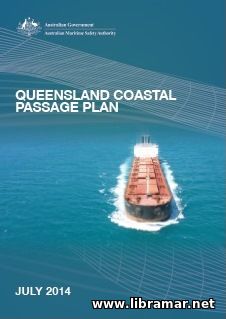 The present information document has been originally developed and released in 2011 by AMSA specialists working closely with the Coastal Pilot Working Group. Some very valuable contributions have been added by the pilotage stakeholders and pilots. The information that has been selected for the inclusion in the present publication in the "passage plan model" as per the Marine Order no. 54.
This paper has been designed as a guide for conducting pilotage activities in Queensland areas. Note that it is not intended in any way to provide any formal legal advice and has been published only for reference. Mariners are expected to use the chartlets and other info provided in the book to support the voyage planning, navigating principles and common practices of seamanship. The content of this title has been arranged in four big chapters. The first chapter provides general information related to the pilotage, bridge resource management, management of the risks associated with coastal pilotage, draught and routes restrictions etc.
The second chapter is dedicated to planning the chartlets and covers different areas. The third section, in turn, covers the uniform waypoints - inner route north/south, great north east channel and hydrographers passage. The last fourth chapter of the documents provides readers with a list of acronyms used throughout the publication.
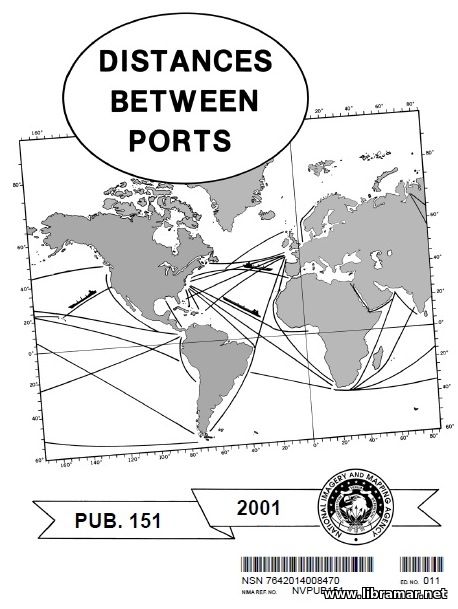 This edition of the Pub. 151 supersedes all previous releases. The distances stated in the table are in nm (nautical miles). Most of those distances are representing shortest routes and sometimes longer routes taking advantage of the favorable currents. In some cases the increased distances are shown; subject distances are resulting from the navigation routes that have been selected in order to avoid the dangers to navigation, for example the ice.
The ports of departure have been listed in alphabetical order together with the distances to the ports of arrival that have been listed straight below them. The authors have also listed the distances to the appropriate junction points. In order to obtain the required distance, users first have to find the port of departure in the list and then select the port of arrival and distance below. In the majority of cases, the distances in to and return directions are reciprocal; however, it may happen that they differ due to the different routes used taking advantage of weather and currents, as mentioned above.
In order to get the distance over the route passing through the junction point(s) you will have to find and manually add all distances for all of the sections into which the original route has been divided. The book contains charts that show the general routes, junction points in Atlantic, Indian and Pacific Oceans, and conversion tables...
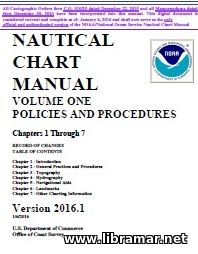 Take a time and have a look in this set of regulatory documents consisting of three separate papers. The first volume titled "Policies and Procedures" is mainly addressing the general practices plus the procedures, topography and hydrography, navigational aids, landmarks, and some other charting information. The second volume provides definitions, symbology, list of charting abbreviations, cartographic orders and memoranda, and miscellaneous references.
The last, third, volume has been fully dedicated to the digital technical specifications. The present manual itself may be treated as a comprehensive pack of documents covering the recognized cartographic standards and procedures. It may also serve to inform the users of the various nautical charts and other involved parties of the established effective practices plus policies commonly in use when producing the nautical charts released by the OCS, standing for the Office of Coast Survey.
Generally speaking, this manual is mainly aimed for the internal use of OCS; note, however, that provision is there for some quite limited exchange of this volume within the nautical charting community. The complete list of specific acronyms are used throughout all three papers of the present set of docs has also been provided for easy and ready reference, and the first of the books starts with a very interesting historical overview.
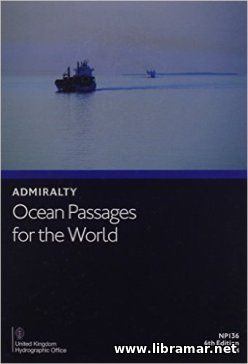 Traditionally, this Admiralty publication provides all mariners with wealth of valuable information related to the planning of ocean voyages. Its content has been prepared so that the book can be used in planning any deep-sea voyage; it includes important notes on weather and other relevant factors that may potentially affect passages, as well as the sailing directions for numerous commonly used navigation routes, also covering the dangers that could affect subject routes.
The authors of the publication have also described the climatic conditions and have provided navigators with the routes that are recommended for the full-powered ships within described areas; the routes for the low-powered ships and ships engaged in eco-steaming have also been provided. Moreover, the publication gives the common routes used by the sailing vessels; note that these routes might have to be adjusted in order to duly reflect all changing conditions and today's regulations.
For each of the routes, the directions contained in the book give a guide for planning; it shall be clearly understood, however, that the conditions will most probably slightly differ from the predicted ones. Data diagrams have been provided for each of the routes in the text of the book. Individual chapters of the book are covering each of the oceans of the world. One of the most important publications.
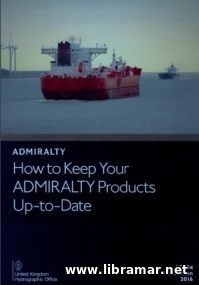 As it is clearly implied by the title of the present nautical publication no. 295, it was specifically released to provide seafarers with the instruction on how to keep their Admiralty-issues navigation charts updated. Obviously, no chart of any part of our world and directions can be perfect enough to require no frequent update, revision and subsequent amendment.
The degree of reliance to the nautical chart must first of all depend upon the completeness and way of the initial survey materials as well as the completeness of the reports of the changes. One shall always remember that no chart shall be taken for granted. This is all to remind you that we can only rely on the duly and timely updated charts. It is not the intention of the present publication to teach navigation; it is rather assumed that mariners are able to perform plotting from the original text of the Notices to Mariners released by the Admiralty and that they are fully aware of the ways to position the updates on the chart.
The objective of this volume was to clearly and simply set up the very fundamental points of the good maintenance of the nautical charts. The text has been supplemented with the numerous nautical charts hand-updated in the UKHO to demonstrate the techniques of updating the charts. Needless to say, one of the basic publications to be possessed on board.
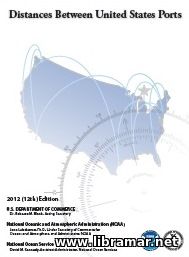 This document contains the distances between the ports located in the United States, it also provides users with the distances between ports in the Great Lakes as well as Canadian ports and ports in St. Lawrence river. Subject distances have been measured along navigable track lines. The geographical coordinated of arrival and departure have been stated for centrally located piers inside ports.
Note that all distances between ports are in nm, i.e. nautical miles, except the distances in the tables addressing Mississippi River System as well as Great Lakes plus other inland waters - subject distances are given in statute miles. In case two or more navigation routes converge, they have been shown in capital letters. The publication is usually prepared and released by NOS, standing for the National Ocean Service, in collaboration with the NOAA, i.e. National Oceanic and Atmospheric Administration, and Office of Coast Survey.
The title of the publication is pretty clear and does not require any further explanation - it is intended to provide users with the distances they will use for navigation when planning their voyages. The book starts with a part providing general information and followed by the main content with the tables giving the distances. Some of the supplementary tables are also provided, e.g. for the estimation of transit time, determination of the wind speed etc.
 The present NavGuide has served as the source of relevant information and signature document for all members of the IALA organization as well as other users. This edition of the guide is continuing on with this tradition; the content of the paper has been seriously updated with the very latest developments and information in the field. It is a product of nearly four-year collaboration by the world recognized and leading experts.
The document plays a critically important role within the IALA info suite and is considered a primary source of information and data for all Aids to Navigation practitioners everywhere in the world to be used together with the other standards and recommendations, manuals and guidelines released by IALA. It has already been translated into several working languages and the IALA organization is encouraging this practice and is ready to co-operated with country members to help in facilitating this process.
The content of document is arranged in several chapters and the first one is providing readers with the introduction to IALA-AISM system. Remaining chapters of the document are dealing with the technical concept and accuracy of the navigation, electronic navigation, aids to navigation, VTS, other services and facilities, power supplies and, finally, provision, design and management matters.
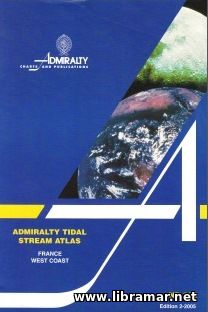 Admiralty Tidal Stream Atlas - Nautical Publication 265 - France - West Coast
|







